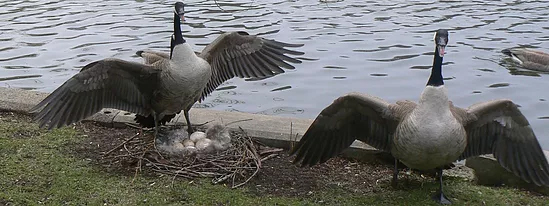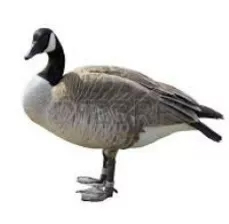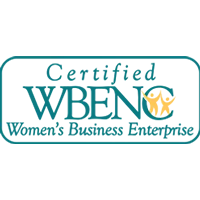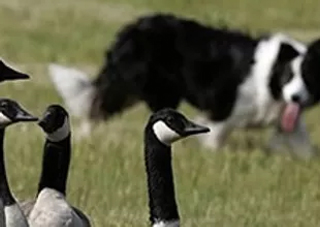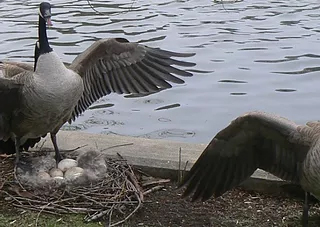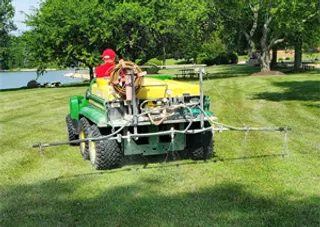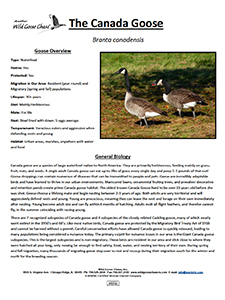More About Canada Geese
APPEARANCE
Large with long neck and a flat bill. Head and neck are black with white cheeks and chinstrap, brown back, and tan chest.
BEHAVIOR
Social, often in large flocks with many of the members related to each other. Pairs will stay together throughout the year, and young often stay with parents for a year. Pairs separate and fights will occur when breeding season starts.
DIET
Almost all plant material, mostly stems/shoots of grasses and seeds/berries. They enjoy cultivated grains and will occasionally eat insects, mollusks, crustaceans, or small fish.
HABITAT
Lakes, ponds, bays, marshes, fields. Diverse but nests are always near water. They often feed in open areas.
NESTING
May mate for life, male will defend territory with displays including hissing, lowering head to ground with bill raised, and pumping head up and down while standing. Nest usually on slightly elevated dry ground with good visibility, location will vary. A female typically lays 4-7 eggs with only one brood per season.
MIGRATION
Resident and migratory populations exist. Many will winter more south and return in spring, migrating as a loose aggregate of multiple family groups as well as individuals. Typically, migrating starts at dusk.
ISSUES CAUSED BY CANADA GEESE
High densities of Canada geese in metropolitan environments have created numerous nuisance and public health problems such as:
- Unnecessary cleaning from the goose droppings left behind on properties
- Reduction in property values and curb appeal
- Algal blooms caused by excessive amounts of goose feces
- Injuries caused by aggressive geese during nesting season
- Increase in aircraft collisions
HOW TO MANAGE ISSUES WITH CANADA GEESE:
- No feeding ordinances and signage
- Habitat modification such as allowing grass to grow and/or plant buffer strips of natural grasses to block the geese’s view of potential predators, and using fence barriers between the geese and nearby water to prevent ease of movement
- Scare devices such as trained dogs, auditory calls, predator effigies, mylar flagging, pyrotechnics, and/or human harassment
- Chemical repellents, such as Flight Control® Plus
- Egg depredation
Why We’re Different
- We understand the role of a property manager and the risks and issues affecting their properties.
- We have a uniquely assembled bird control team including science, construction, sales, and customer support professionals.
- We provide observation and analysis before prescription.
- We have the right resources to respond rapidly.
Sources: The Audubon Society, Cornell Lab of Ornithology bird guide, Humane Society of the United States, Internet Center for Wildlife Damage Management
